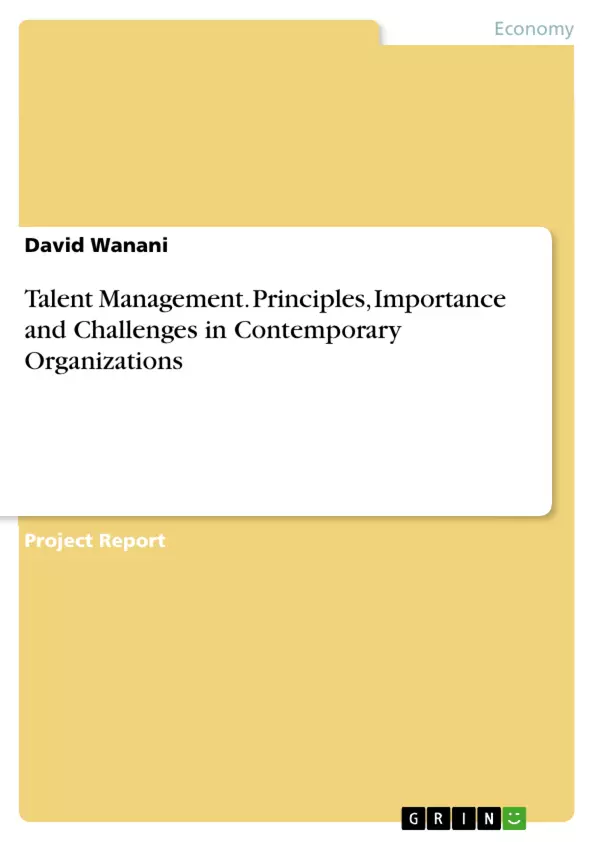Talent management is the most applauded strategy in current organization management. Thus, this study attempts to explore the role of talent management in relation to organizational strategic competitive advantage.
Data is collected by use of simple random sampling that provided open ended structured questionnaires and interviews to 100 people working in different organizations, both public and private located in Arusha Tanzania and also from literature reviews. The results help to define not only the objective of talent management in organizations, but also to draw some important operational principles, emphasizing significance of talent management in organizations and the challenges facing it by qualitative description.
Generally, talent management has been proved to be of vital importance in contemporary organizations as they are faced with competition. This importance seems to be beyond normal imagination. However, more studies and refinement to cope up with the ever changing business environment should be a continuous agenda within talent management.
Inhaltsverzeichnis (Table of Contents)
- Introduction
- Background
- Problem Statement
- Methodology
- Significance of the Study
- Conceptualization of Talent Management
- Talent Management Objectives
- Talent Management Principles
- Talent Management Principles- The Strategic Process
- Talent Management Principles- Strategic Formulative Process
- Talent Management Principles- Strategic Implementation and Modification Process
- Importance of Talent Management
- Importance of Talent Management- Practical Framework
- Challenges to Talent Management
- Challenges to Talent Management- The Influences
- Talent Management- Final Remarks
Zielsetzung und Themenschwerpunkte (Objectives and Key Themes)
This study investigates the role of talent management in relation to organizational strategic competitive advantage, drawing on data collected from 100 individuals in various Tanzanian organizations. The research aims to define talent management objectives, identify operational principles, highlight its importance within organizations, and explore the challenges it faces.
- The role of talent management in achieving organizational competitive advantage
- The principles and processes of effective talent management
- The importance of talent management in contemporary organizations
- The challenges facing talent management in organizations
- The relationship between talent management and human resource management
Zusammenfassung der Kapitel (Chapter Summaries)
- Introduction: This chapter introduces the concept of talent management and its growing importance in contemporary organizations. It emphasizes the need for organizations to prioritize talent as a key resource for achieving sustainability and competitive advantage.
- Conceptualization of Talent Management: This chapter explores the definition and conceptualization of talent management, highlighting its role in attracting, developing, and retaining skilled workforce. It also discusses the importance of aligning talent management with organizational goals and strategies.
- Talent Management Objectives: This chapter outlines the key objectives of talent management, including attracting, developing, retaining, and engaging top talent. It emphasizes the need for a comprehensive approach to talent management that addresses all stages of the employee lifecycle.
- Talent Management Principles: This chapter delves into the strategic principles of talent management, focusing on the importance of a systematic and integrated approach. It explores the process of talent management, from strategic formulation to implementation and modification.
- Importance of Talent Management: This chapter examines the significance of talent management for organizations, highlighting its role in enhancing performance, fostering innovation, and achieving organizational success. It presents a practical framework for effective talent management.
- Challenges to Talent Management: This chapter explores the challenges faced by organizations in implementing and managing talent. It identifies various factors that can hinder effective talent management, including internal and external influences.
Schlüsselwörter (Keywords)
This study focuses on talent management and its implications for organizational success. The primary terms and concepts explored include talent attraction, talent development, talent retention, strategic competitive advantage, and the relationship between talent management and human resource management.
- Quote paper
- David Wanani (Author), 2017, Talent Management. Principles, Importance and Challenges in Contemporary Organizations, Munich, GRIN Verlag, https://www.grin.com/document/381095



